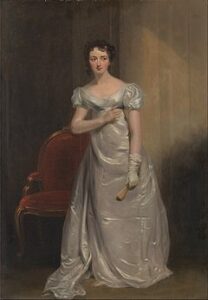 Stanley Kubrick did it. Stephen King hated it. The rest of the world loved it. Shelley Duvall had a nervous breakdown from it.
Stanley Kubrick did it. Stephen King hated it. The rest of the world loved it. Shelley Duvall had a nervous breakdown from it.
What was it? Kubrick’s film The Shining, of course.
But we’re not here today to talk about the film. We’re here to talk about the music that overlays the opening title sequence from it. That deep, disturbing horn. Those wailing damned souls.
I never knew until decades after seeing The Shining where that music came from. Those who know Kubrick will hardly be surprised that it’s a piece of classical music—the earliest kind of classical music: Gregorian chant.
The piece is called “Dies Irae,” which means “Day of Wrath.” It was most well known as a part of Roman Catholic funeral masses. Certainly a fitting selection to open a movie like The Shining. It was written at least as long ago as the 13th century, and could very well be older than that.
Kubrick used the first line of the theme again in A Clockwork Orange, lightly sprinkling it in over other classical music in a couple spots.
Over the centuries it’s become one of the most borrowed melodies in the history of music. A prominent example of this is post-Beethoven French composer Hector Berlioz, who presented one of the most imaginative and titillating versions of the chant.
 He wrote a massive symphony that requires a massive orchestra. It’s called Symphonie Fantastique, and it’s a fantastic symphony indeed (although the word “fantastique” in the title refers more to fantasy than fantastic).
He wrote a massive symphony that requires a massive orchestra. It’s called Symphonie Fantastique, and it’s a fantastic symphony indeed (although the word “fantastique” in the title refers more to fantasy than fantastic).
 Berlioz fell in love with an actress named Harriet Smithson whom he saw performing in a play by a popular contemporary English playwright named Shakespeare. He was instantly smitten, and—yes, men will go to such lengths to woo a woman—wrote the massive symphony hoping to impress her.
Berlioz fell in love with an actress named Harriet Smithson whom he saw performing in a play by a popular contemporary English playwright named Shakespeare. He was instantly smitten, and—yes, men will go to such lengths to woo a woman—wrote the massive symphony hoping to impress her.
Most symphonies have four movements. His had five. The final movement is the most spectacular of the five. He called it “Dream of a Witches’ Sabbath,” and he took the same cue Kubrick did centuries later by incorporating “Dies Irae” smack in the middle of it, about three minutes in.
But unlike Kubrick’s stark, unadorned version, Berlioz played with it, musically dancing around with it as if he were one of the witches.
To Berlioz’s great disappointment, the first time the symphony was performed, the reactions were mixed, and his beloved Harriet didn’t even attend. He revised the work, and much later when it was performed again, he personally sent an invitation to her.
 This time the audience enthusiastically applauded. Harriet realized the symphony was about her and agreed to meet with him. He wooed her, and in an act of desperation, drank a lethal dose of opium right in front of her. She panicked and agreed to marry him, at which point he pulled out the antidote and swallowed it.
This time the audience enthusiastically applauded. Harriet realized the symphony was about her and agreed to meet with him. He wooed her, and in an act of desperation, drank a lethal dose of opium right in front of her. She panicked and agreed to marry him, at which point he pulled out the antidote and swallowed it.
They married. Eventually they parted, but he always took care of her, and at the end they were buried together. A romance worthy of Shakespeare, Kubrick, and the “Day of Wrath.”
Good day! This is my first comment here so I just wanted to
give a quick shout out and say I really enjoy reading your articles.
Can you recommend any other blogs/websites/forums that cover the same subjects?
Many thanks!
Its like you read my mind! You appear to know
so much about this, like you wrote the book in it or something.
I think that you can do with a few pics to drive the message home a
little bit, but other than that, this is excellent blog.
A great read. I will certainly be back.
I appreciate both your comments. I hadn’t noticed that, when I switched my blog to a new location in my website folders, the links to the videos transfered as text. I’ve fixed that, and now there are not only more pics, but they’re moving pics.
I actually couldn’t tell you what similar blogs might be out there. I’ve tried to do something different, so I dont know whose doing something similar.